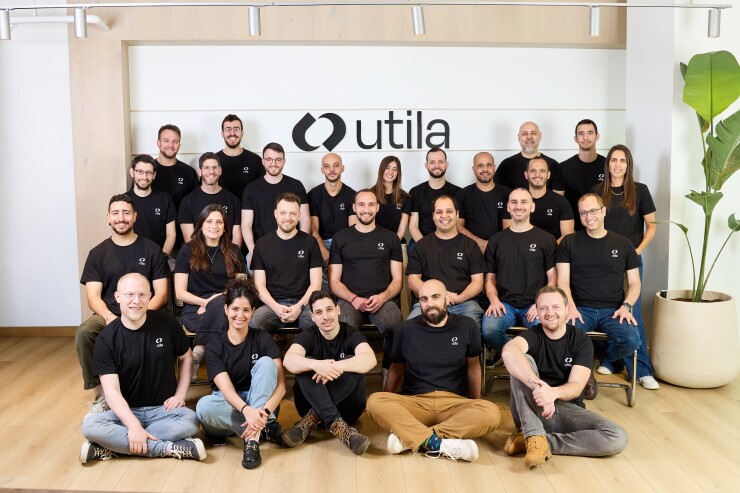
Utila, a digital asset management platform, announced Wednesday it raised $18 million in its Series A funding round, one of the largest rounds to date for a SaaS crypto company.
Headquartered in Tel Aviv and New York, Utila employs a multi-party computation wallet to process stablecoin transactions. The company says its MPC wallet was designed with military-grade security with the aim of being the standard platform for institutions looking to use cryptocurrency.
Crypto holders must have both a public key and a private key in order to use their digital assets. Prior to MPC wallets, crypto owners held their digital assets typically in one of three ways: cold storage where the private key is held offline; hot storage where it is held online; or a hardware wallet where the private key is held offline on a physical device.
MPC wallets are a method of decentralizing the private key by breaking it up into encrypted parts that are dispersed across the blockchain network, rather than held in a single point. Bentzi Rabi, co-founder and CEO of Utila, said this technology makes the wallet more secure against cybersecurity attacks.
"At our core, we are a security infrastructure company, providing the critical infrastructure for any kind of digital asset use case that an institution needs. It's the first thing [institutions looking to get involved with digital assets] buy," Rabi said. "Whenever an organization thinks of entering the blockchain space, the first thing they will do is set up with a platform like Utila and then they will bring in the other providers. We are starting to feel like we are a go-to for many B to B providers in the crypto space."
The infrastructure is essential for digital asset management, Rabi said. Utila offers enterprise-grade secure MPC wallets, transaction and user management, application programming interfaces for users to create custom applications on top of the multi-chain wallet infrastructure and a tokenization engine for companies looking to launch their own digital asset.
"We enable organizations to create wallets on multiple blockchains utilizing MPC, multi-party computation," Rabi said, adding the company offers many features on top of this and easily works with other providers. "It builds like a Lego block, which means you as an organization can decide how you want to use Utila. There's a whole ecosystem of solutions around Utila that you can easily connect to."
Utila has secured $35 billion in digital asset transactions in its first 18 months, according to the company, working with clients around the world. Since exiting stealth in March of last year, Utila has raised $30 million. The funding round announced Wednesday was led by Nyca Partners with participation from seed investors Wing VC and NFX. Haymaker Ventures, Gaingels and Cerca Partners also participated. The company said it intends to use the financing to build up scale and expand research and development.
Rabi said he and his co-founder Sam Eiderman both had experience working in tech and with crypto. They started the company in 2022 with the vision of creating "AWS for digital assets."
"We were thinking big," Rabi told American Banker. "We were saying, we expect to see every financial institution leveraging blockchain technologies and mostly for moving tokenized assets. We expected to see back then, almost three years ago, a growing demand for an infrastructure which will enable these organizations to utilize blockchain for [stablecoins] and the base of everything at the end of the day is the wallet, so we started building wallet infrastructure. That's the base of what we do."
The market for stablecoins has grown significantly in recent years with transfers hitting $27.6 trillion in 2024. A
In the U.S. steps are being taken to
White House Crypto Czar
"I look forward to working with each of you in creating a golden age in digital assets," Sacks said, noting